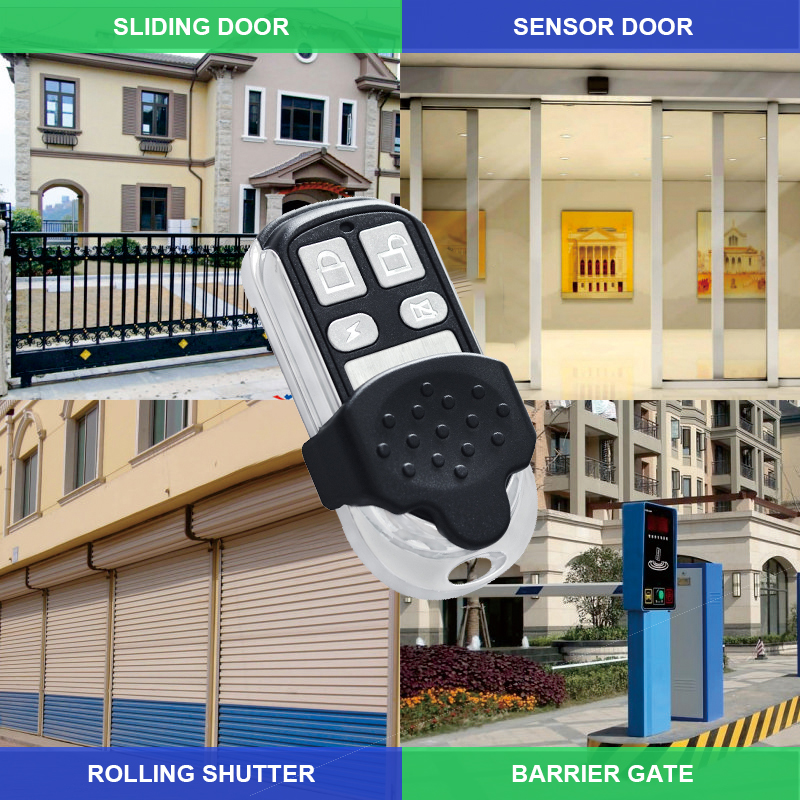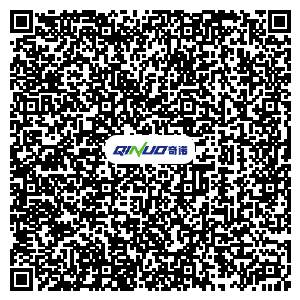Rolling code remotes have long been the gold standard for garage door openers, security gates, and access control systems. They offer enhanced security by changing the access code with each use, preventing replay attacks and unauthorized entry. But as smart technology continues to evolve, many homeowners and businesses wonder: Do rolling code remotes offer additional features like smartphone integration?
The answer is yes—modern rolling code systems now come with enhanced functionalities, including smartphone control, remote access, and integration with home automation systems. Let’s explore how rolling code technology has evolved beyond traditional remotes.

Understanding Rolling Code Technology
Before diving into smartphone integration, it's important to understand how rolling code remotes work:
Dynamic Security: Unlike fixed-code remotes, which use a single code that can be copied, rolling code remotes generate a new, encrypted code each time you press the button.
Sync with a Receiver: The remote and receiver (such as a garage door opener) stay in sync, ensuring only authorized access.
Difficult to Hack: Because the code constantly changes, rolling code remotes prevent signal interception and duplication, making them far more secure than older remote systems.
Smart Features in Modern Rolling Code Remotes
Today’s rolling code systems are not just about pressing a physical button. Many now offer smart features, including:
1. Smartphone Integration
Many rolling code systems now work with WiFi, Bluetooth, or cloud-based apps, allowing you to control access from anywhere.
WiFi-Enabled Garage Door Openers: Some manufacturers, like LiftMaster, Chamberlain, and Genie, offer WiFi-compatible openers that let you control your garage door via an app.
Bluetooth Connectivity: Some rolling code remotes now pair with smartphones via Bluetooth, allowing short-range access without needing an internet connection.
Cloud-Based Control: Advanced systems allow you to monitor and control doors and gates remotely through cloud-based apps, ensuring security from anywhere.
2. Smart Home Integration
Rolling code remotes can now be integrated into smart home ecosystems, such as:
Amazon Alexa, Google Assistant, and Apple HomeKit: Voice-controlled garage doors let you open and close them with a simple command.
IFTTT (If This, Then That) Automation: Connect your garage door opener to other smart devices (e.g., turn on lights when the garage door opens).
Geofencing: Some apps use GPS tracking to automatically open or close the garage when you approach or leave home.
3. Remote Access and Monitoring
Advanced rolling code systems allow:
Real-Time Notifications: Get alerts when your garage door is opened or closed.
Temporary Access Codes: Grant temporary or scheduled access for visitors, delivery drivers, or service workers.
Activity Logs: Track who accessed your garage and when, improving security.
4. Multi-Device Control
Instead of carrying multiple remotes, some rolling code systems allow you to:
Control multiple garage doors or gates from a single app or remote.
Sync with keyless entry systems, such as fingerprint scanners or smart keypads.
Share digital access with family members or employees via smartphone apps.
How to Upgrade to a Smart Rolling Code Remote
If you have an older rolling code remote and want smartphone integration, here’s how you can upgrade:
Option 1: Buy a WiFi-Enabled Garage Door Opener
Many modern garage door openers come with built-in WiFi connectivity and app support. Some popular models include:
Chamberlain MyQ Series
Genie Aladdin Connect
LiftMaster WiFi Openers
Option 2: Use a Smart Garage Door Controller
If your garage door opener already has rolling code technology but lacks smart features, you can add a WiFi-enabled controller, such as:
Chamberlain MyQ Smart Garage Hub
Nexx Garage
Tailwind iQ3 Smart Controller
Option 3: Bluetooth or RF-Based Smart Remotes
Some smart remotes pair directly with smartphones using Bluetooth or radio frequency (RF) receivers, allowing short-range control without internet access.
Option 4: Smart Home Hub Integration
If you already use a home automation hub (e.g., SmartThings, Apple HomeKit, or Hubitat), check if it supports your rolling code garage door opener for direct integration.
Are There Any Security Concerns?
While smart rolling code remotes add convenience, some people worry about potential risks. Here’s how modern systems keep your garage or gate secure:
End-to-End Encryption: Smart controllers and apps encrypt their signals, preventing hacking attempts.
Two-Factor Authentication (2FA): Some systems require 2FA to prevent unauthorized access.
Regular Firmware Updates: Manufacturers frequently update software to fix vulnerabilities.
To ensure maximum security, always:
Use strong passwords for your smart garage app.
Enable app notifications to monitor unauthorized access attempts.
Regularly update firmware for your smart garage system.
Conclusion: The Future of Rolling Code Remotes is Smart
Rolling code remotes are no longer limited to simple button-press access—they have evolved to support smartphone integration, remote monitoring, and home automation.
Whether you choose a WiFi-enabled garage door opener, a smart garage hub, or Bluetooth control, upgrading to a smart rolling code remote system can enhance security, add convenience, and give you total control over your access points.
As technology continues to advance, rolling code remotes with AI-powered security, biometric integration, and cloud-based automation will become the new standard in access control.
Thinking of upgrading your rolling code remote? Explore the latest smart controllers and make your home or business more secure today!

-
Office ViewQinuo Electronics Co., Ltd.was founded in 2009,it is a high-tech company that integrated R & D, manufacturing, sales and service for 15 years,which is mainly specialized in providing sensors of automatic door, control system of door and gate, car key remote, auto parts etc. The company currently has four independent brands: U-CONTROL, U-SENSORS, U-AUTOGATES and U-AUTOKEYS.
-
got questions? call us
+86 13960286508
-
fax :
+86 595 22901208 -
Email :
[email protected]
-
address
- No.991 Xingxiu Road,Taiwanese Investment Zone, Quanzhou, Fujian Province,P.R.China











